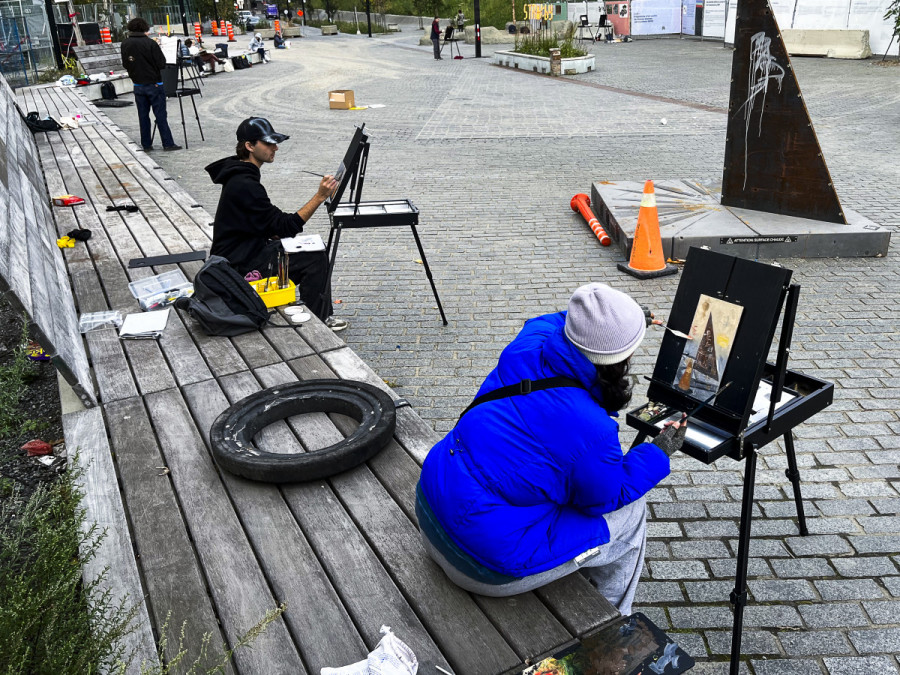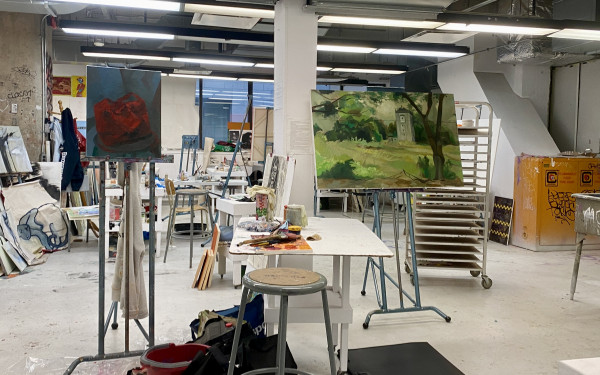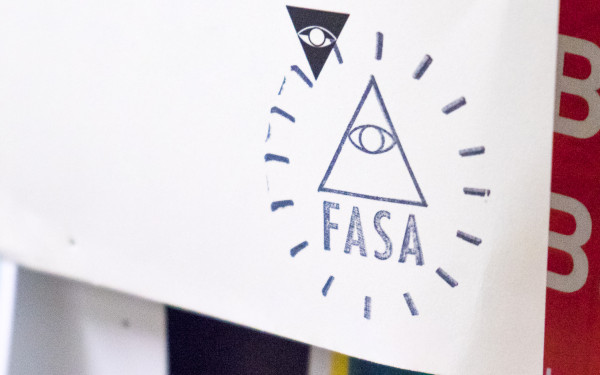The financial obstacles to accessing a fine arts degree at Concordia
Fine arts students aim to dispel myth of “creating something out of nothing”
Concordia’s faculty of fine arts is typically catered towards students who—on top of their tuition fees—can afford to pay additional lab and studio fees, as well as the supplemental material that they must purchase for their classes.
In October 2023, an additional financial barrier was announced. The Quebec government told English-language universities that new tuition hikes for international and out-of-province students would be put in place, making access to higher education increasingly difficult. This burden would fall especially hard on students who wish to pursue degrees that require them to spend a large sum of money in addition to tuition fees.
Currently, tuition for out-of-province fine-arts students stands at $8,992 per year, but is expected to reach $12,000—and an approximate addition of $5,000 per international student sent to the French university system—starting in the fall 2024 semester. It is also important to note that the cost of participation in these classes increases significantly when supplies and studio fees are taken into account. Some programs provide students with required material lists at the beginning of courses that can reach $1,200.
Nastaran Pourtaherian, an international student enrolled in the photography program who is also the outreach coordinator at the Fine Arts Student Alliance (FASA), said she is expected to spend upward of $1,000 for class materials. She said the quote provided by her professors at the beginning of the school year is an estimate that is impossible not to exceed.
“There are so many accidents that happen, technical problems,” said Pourtaherian about her film photography projects. She went on, saying she would often need to buy more rolls than the beginning of semester estimate, and start from scratch, just on account of mistakes.
Cate Gransaull, a photography student in her first year, shared the complications she faces when it comes to purchasing supplies. “I think it’s crazy how someone with a decent amount of privilege, like myself, is still struggling to [acquire materials],” she said. “I have a photography assignment due on Monday and I haven’t even had a chance to start it because I didn’t have money to buy film in time.”
Gransaull, who went to a public art high school in Toronto, said she was surprised by the extra costs of her classes when she first started her degree at Concordia. “During [high school], I paid a fee and had access to all the materials [I needed],” Gransaull said. “I didn’t have to buy my own camera, I didn’t even have to buy darkroom paper, which is so expensive. A public school somehow had the accessibility for everyone.”
Both Pourtaherian and Gransaull mentioned the Centre for Digital Arts depot for fine arts students, which allows students to rent out equipment for free for a limited period of time.
While Pourtaherian finds the depot to be “easy to access and very helpful,” Gransaull is more critical of it. For her, the fact that she can only rent out equipment for a couple of days and has to wait a week before being able to rent something else isn’t enough to complete her assignments.
There are other resources students can resort to in order to reduce the amount of money fine arts students must pay to complete their coursework.
The Centre for Creative Reuse (CUCCR) offers students and non-students the possibility to access a wide variety of materials for free. Through a wide variety of donated supplies and materials, the centre is able to work alongside students to find the best way to approach their project.
“We actually do quite a bit of problem solving with students that come in,” said Maya Jain, CUCCR’s reuse coordinator. She explained the process behind finding more sustainable and less costly alternatives to typical materials. “Often, in my opinion, projects can be even more interesting when we get creative in that way.”
Jain said one of the centre's goals is “fostering community and building culture change.” “[CUCCR is] sort of a balancing act between making things more accessible and encouraging creativity with materials while also being critical and thinking about the long-term impact of what we’re creating,” she added.
FASA also provides assistance to students in the form of personal, group or community project grants. The application forms, found on FASA’s website, require the applicants to have a clear vision for their project’s outcome, as they need to submit a statement, budget, description and goal. Adey Singer, FASA’s finance coordinator, said she wasn’t sure how many grants are given out each year, but said that very few people apply. “With the personal grants, [the goal is] to help [students] with personal projects,” said Singer. “[For example], helping to fund a project [a student is] working on for class that can be expensive.”
Noa, a student in the studio arts program who was given a pseudonym upon request, was always aware of the extra costs of pursuing a Fine Arts degree. They grew up practicing art and expected to keep spending on supplies.
An issue they brought up is that, to their knowledge, these funding opportunities are advertised as only being for students with long-term projects in mind. “It feels like if you don’t know what to make, you are still discovering it, or you don’t have time to dedicate your life to art, there is not much that can be done for you,” Noa said.
Singer, however, expressed her desire to see more students apply for these grants. “The money for the grants come from a fee-levy so we do our best so that our money goes back into the pockets of Concordia students,” she said.
According to Singer, FASA utilizes two fee levies. The first one comes to around $2.16 per credit to finance general operations, and the second, dedicated to the Special Project grants, is of about $0.80 per credit.
Associate professor of the studio arts department Jonathan Mark Igloliorte received a grant with which he bought his students French easels to complete an outdoor painting project instead of having them each buy their own. As well, he mentioned that the faculty of fine arts recently hired a technician who could help students build their own canvases. “[Stretching our own canvases] is something that is extremely cost effective,” he said.
“Getting an art degree is not a requirement to be a good artist, but it does its part to stop brilliant people from moving too quickly,” said Noa. “Art school, if done right, gives the opportunity to network.” They highlighted the way museums are curated to weed out the people who don’t typically fit into a world reserved for the select few “dead male revolutionists that ‘upgraded society’ a hundred years ago.”
“It’s very rare that any of the people I see in my classrooms will even breathe near a museum exhibition of their own,” Noa said. “So what are we really paying for?”
This article originally appeared in Volume 44, Issue 8, published January 16, 2024.


_600_832_s.png)



_600_375_90_s_c1.jpeg)
